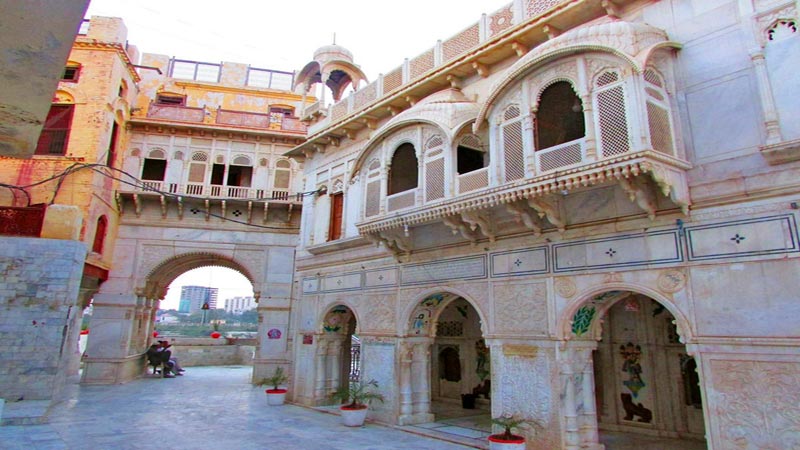Chandka Medical College 6th Batch (1978 -1984) has been arranging a gathering every year since last 2016. The Sukkur Chapter accepted to host the third reunion on November 16 and November 17, 2019.
The organizers had arranged a visit to Sadhu Belo, which can never to be forgotten.
Sadh Belo is an island in the Indus River near Sukkur, Sindh, which is famous for its highly revered Hindu temples. The temples are associated with the syncretic Udasi movement.
The island is famous for Teerath Asthan, which is the biggest Hindu temple in Pakistan. The complex has eight other temples, a library, dining areas, a huge garden along with rooms and residences for monks and people who want to stay on the island on a spiritual retreat.
The word Sadhu means religious ascetic, mendicant (monk) or any holy person in Hinduism. And, therefore, the word Sadhu Bela means the woods of the sage/sadhu.
The forested island was called Manak Parbat and later became known as the Sadhu Bhelo after Baba Bankhandi Maharaj settled there.
Sadhu Bela Island is downstream from Sukkur island and separated from it by a short stretch of the river. It is located on the River Indus flowing between Rohri and Sukkur.
Baba Bankhandi Maharaj, a 15-year-old spiritual seeker, whose origins were reportedly either from Kero Khetar near Dehli or Nepal, arrived in Sindh in 1823, in the town of Sukkur. It was then a major trading hub for the subcontinent. He settled in the forested island of Menak Parbat (Sadhu Bela’s original name), alone, and became known as the sage of the woods. The island was just a clump of trees when Bankhandi first arrived there, but he liked the place so much that he chose it to set up his dhuni (sacred fire). It is said that once Baba Bankhandi saw Annapurna, the goddess of grain, in a dream. She gave him an oblong metal object called Kamandal and told him that as long as this object was in the complex, there won’t be any shortage of grain for the community kitchen. Later, Baba Bankhandi established various places of worship, including temples, and dedicated them to Annapurna, Hanuman, Ganesh and Shiv Shanker as well as places for Granth Sahib and Bhagavad Gita. Baba Bankhandi died at 60 years. Baba Bankhandi had many disciples who succeeded him one by one as the mahant or custodian of the place. The most notable among them are Swami Achal Prasad, Swami Mohan Das, and Swami Harnarain Das Udasin.
It was Sant Harnam Das, the Maharaj’s eighth Gaddinasheen (caretaker) who began constructing the temple in 1889.
Sadhu Belo is under the custody of Evacuee Trust Property Board and managed well, but the absence of the former administration of Udasi mahants is felt immensely
The place is held in high esteem by Hindus throughout Sindh and even in India, occasionally attracting pilgrims from across the border. The annual death anniversary of Baba Bankhandi Maharaj, called the Baba Bankhandi Maharaj Mela, is attended by thousands. It is celebrated by a three-day festival in which pilgrims are provided with free lodging, food, and water. One of the unique features about Sadhu Belo is that many prayers and texts are written here in Sindhi, the language of the Sindh province. The security system is very tight. Nobody can enter or visit the temple without having permission. There is a proper way to get permission from Pakistan Hindu Panchayat.
The Gaddinasheen of the temple (the family, which has been managing the temple complex for generations) moved to India after partition in 1947. But members of the family still travel once every year to Pakistan to officially open and attend the fair as symbolic keepers of the temple complex. Currently, Sadhu Belo is under the custody of Evacuee Trust Property Board and managed well, but the absence of the former administration of Udasi mahants is felt immensely.
In 2013, the board supervised major renovations and repairs of the temples and shrines at an estimated cost of Rs 487 million.
People from different religions and cultures have coexisted and lived in cultural harmony for centuries in Sindh. It is reported that the famous Mughal emperor Akbar, renowned in world history for his policies of religious tolerance and bringing various cultural and religious groups of the subcontinent together under the banner of the Mughal Empire, was born in Sindh. It was during the time of the Mughal reign that the story of Sadhu Bela began.
Today, the island is famous for Teerath Asthan, Pakistan’s biggest temple. The tiny island regularly draws in seekers from different faiths and neighbours from across the border.
The temple has very attractive architecture. The walls of the temple are decorated with marble carving on which their gods’ sculptures are put up in an aesthetically pleasing manner.
There is a major Diwali fair held on the island every year and people following the Hindu faith gather from all over Pakistan and India. The island is cocooned in harmony with Hindu and Sikh worshippers, Muslim caretakers and Gaddinasheens.
The writer visited the Sadh Belo with colleagues and family members with the help of the organisers, Dr Abdul Wahid Abbassi; Dr Abdul Aziz Memon; Dr Ikram Bhurgari; Dr Saeed Pathan and Dr Sun Mukh Das. The reunion group can never forget the visit of this historical temple. Special arrangements were made with refreshment by Dr Sun Mukh Das. A night earlier, the awards and Sindhi Arjak were presented to all participants of the 6th Batch of CMC Larkana.
The writer is a retired officer from the Health Department of Govt of Sindh

